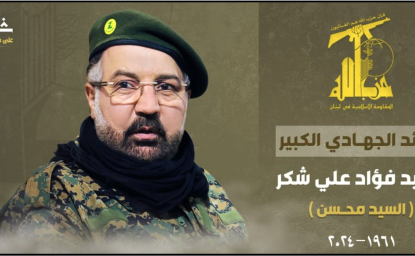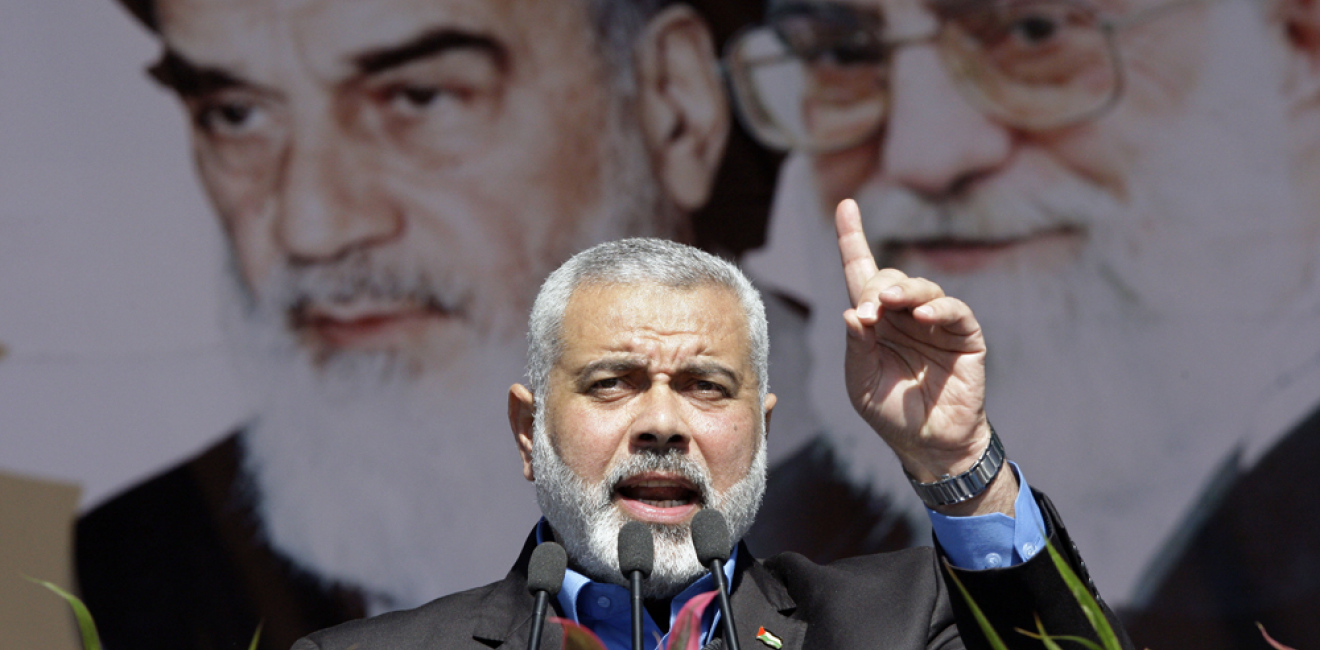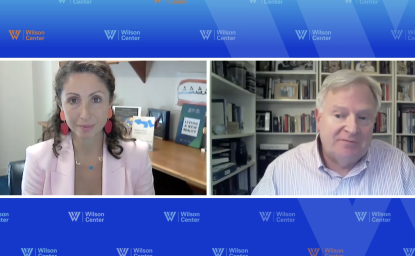By Daniel Levin
Iran supports groups such as Hamas and Palestinian Islamic Jihad (PIJ) for both geostrategic and ideological reasons. Geo-strategically, Tehran aids, arms and funds the two groups to expand its regional influence. Ideologically, Iran views Israel as a usurper of Muslim lands and a threat to Islam. Tehran also views Israel as an extension of the United States. The Islamic Republic calls the United States the “Great Satan” and Israel the “Little Satan.”
“We regard Palestine as an organ of our body, and the support of the Palestinian nation is pride for the Iranian people,” Ayatollah Ali Khamenei said in 2000. “The Palestinian people must continue the blessed Jihad and standing against the enemies of Islam...The Hamas, Islamic Jihad and Fatah forces must continue the struggle in a united way. Indeed, the only solution is the elimination of the root of this crisis, which is the Zionist regime imposed on the region.”
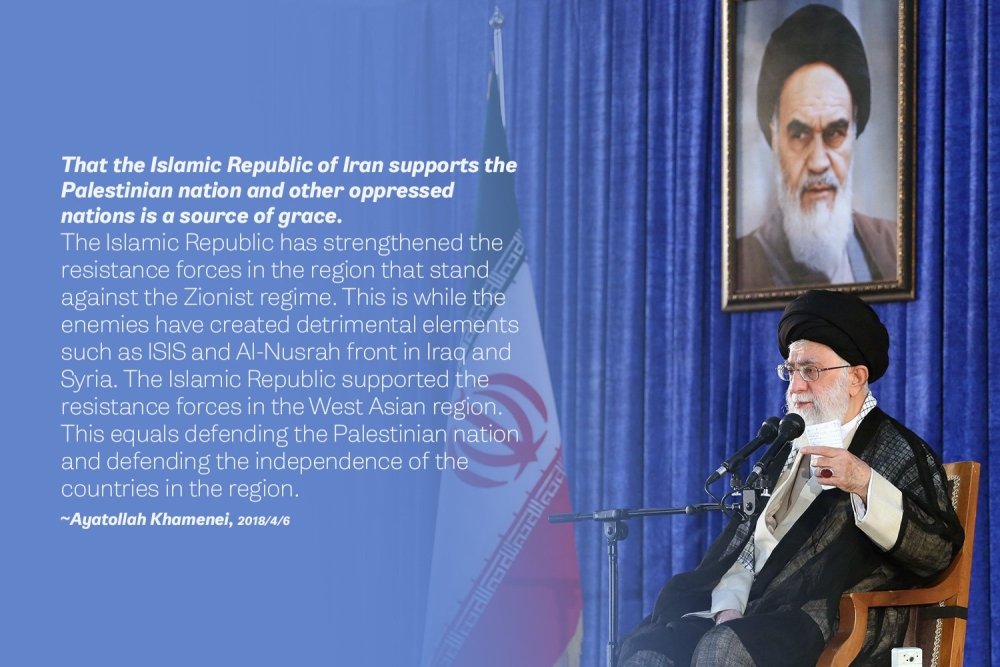
Hamas and PIJ employ disparate tactics but share the same goal of replacing Israel with an Islamic state. Formed in 1987, Hamas has followers in both Gaza and the West Bank; it ran in the 2006 Palestinian election. Created in 1979, PIJ is the more militant faction; it operates primarily in Gaza but also runs cells in the West Bank. Iran’s funding varies depending on how much the two movements’ statements and actions reflect its regional interests. PIJ more often mirrors Tehran’s positions. As a predominantly Shiite country, Iran has developed ties with Hamas and PIJ—both Sunni movements—to bridge the sectarian divide and market itself as a pan-Islamic power. The ties also give Iran allies in the Levant, the Eastern Mediterranean region.
Israel and Iran were not always enemies. For three decades—between Israel’s establishment in 1948 and the Iranian Revolution in 1979—they had low-profile economic and military ties. Israel was a source of weapons for Iran, and Iran was an important source of oil for Israel. The relationship was based on mutual interests, as the two non-Arab countries in a region dominated by pan-Arab movements. Both were also US allies at a time when the Soviet Union had close diplomatic and military ties in the Arab world. After the revolution, Israel continued arms deals to Iran during the early years of the Iran-Iraq war, between 1980-1988, but sales ended in the mid-1980s.
Hamas
Overview and Ideology

Hamas—the Islamic Resistance Movement or Harakat al Muqawama al Islamiyah—is both an Islamist party and a militia based in Gaza. It was founded in 1987 by Sheikh Ahmed Yassin, a popular cleric, as the Palestinian branch of the Muslim Brotherhood. It emerged during the first intifada uprising against the Israeli occupation. Its original charter advocated destroying Israel and establishing an independent Islamic state in historic Palestine. A revised charter, introduced in May 2017, provisionally accepted a Palestinian state based on the 1967 borders.
Hamas has two primary divisions. The political wing governs Gaza and provides social services. The military wing—the Izz ad-Din al Qassam Brigades, named after a Muslim preacher in British-occupied Palestine in the 1930s—targets Israel with rockets, suicide bomb attacks, and cross-border raids. In October 1997, the United States designated Hamas as a Foreign Terrorist Organization.
Relationship with Iran
Iran provides Hamas with financial aid, weapons and training. Their relations converged after the 1990 Gulf War and the US-orchestrated Madrid Peace Conference, which was organized to revive the Israeli-Palestinian peace process. In 1992, at a conference in Tehran, Iran reportedly vowed to give Hamas $30 million annually and provide military training. Hamas later opened an office in Tehran. Ties deepened in 1992 after Israel deported hundreds of Palestinians, including Hamas leaders, to Lebanon. While in Lebanon, Hamas received military training from Hezbollah and the Iranian Revolutionary Guard Corps (IRGC). Between 1990 and 2000, Iranian financial support to Hamas reportedly ranged from $20 million to $50 million annually, even as it maintained ties with Yasser Arafat’s Palestinian Liberation Organization and the Fatah Party—political rivals to Hamas.
In the 2006 legislative elections, Hamas won a majority—76 of the 132 seats, compared to Fatah's 43 seats. It briefly led the Palestinian Authority in both the West Bank and Gaza. In the year after the elections, however, tensions grew between the two largest Palestinian parties. In mid-2007, President Mahmoud Abbas (of Fatah) fired Prime Minister Ismail Haniyeh (of Hamas); Hamas also forcibly assumed control of security in the Gaza strip. These actions resulted in the dissolution of the Palestinian Authority’s unity government and the de facto division of the Palestinian territories into two entities, with Gaza governed by Hamas and the West Bank governed by Fatah.
During this turbulent period, Hamas ties to Iran deepened. In December 2006, Prime Minister Haniyeh visited Tehran, where he met with Supreme Leader Ayatollah Khamenei and President Mahmoud Ahmadinejad. Iran reportedly gave Hamas $250 million. During the 2008 Gaza War—dubbed “Operation Cast Lead” by the Israelis and the “Battle of al Furqan” by Hamas—Iran increased aid, including more advanced rockets, to Hamas. “The victory of the people of Gaza was a miracle of God, and the Islamic Republic definitely has a share in this victory,” said Khaled Mashaal, the Hamas political leader in exile.
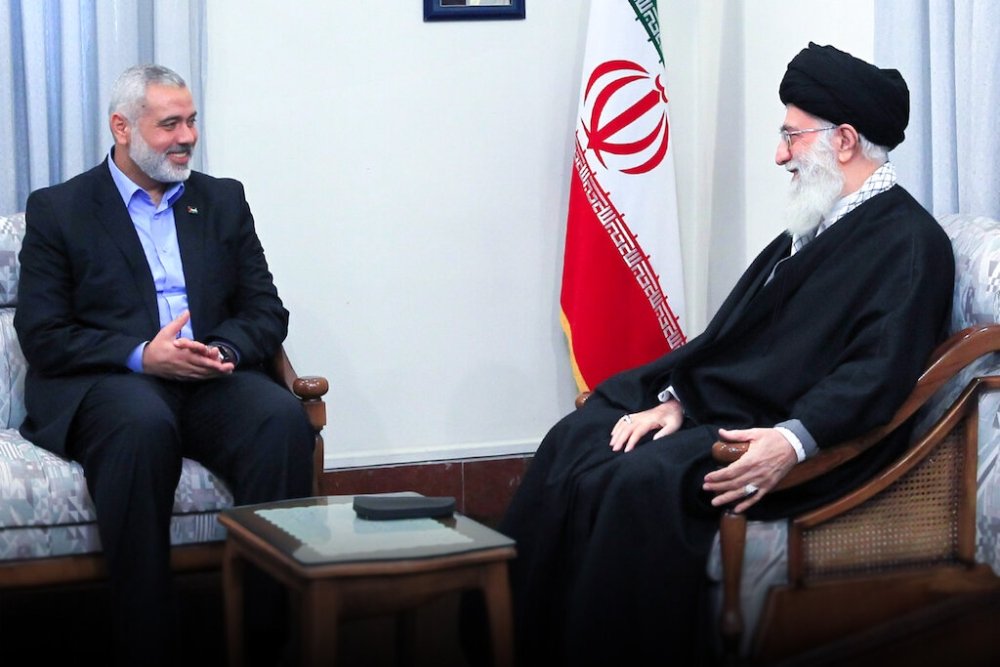
The outbreak of the Syrian civil war in 2011 triggered a split between Tehran and Hamas, which backed opposing parties. Iran provided troops and strategic military assistance to prop up President Bashar al Assad, a member of the Alawite minority. Hamas pledged support for the predominantly Sunni opposition. In return, Iran cut off funding to Hamas—reportedly $23 million monthly—in 2012. Hamas was also squeezed in 2013 when the Egyptian military ousted the first Muslim Brotherhood-led government in Cairo and closed tunnels between Gaza and Egypt that Hamas had relied on to smuggle supplies, arms and people. The closures had a sweeping impact on revenue sources for the Hamas government, reportedly reducing its budget by up to 75 percent.
After the split with Syria, Meshaal and other senior Hamas members were forced to leave their long-time base in Damascus. Hamas turned to Qatar for funding and as an alternative headquarters. The partnership with Doha helped to ease some of movement’s financial troubles.
In 2015, tensions between Hamas and Iran also developed when Hamas expressed tacit support for the Saudi-led offensive against the Houthis, a militant rebel group backed by Iran in Yemen.
In August 2017, Iran again began funding Hamas after Saleh al Arouri, the Hamas second-in-command, met with senior Iranian officials. “Relations with Iran are excellent and Iran is the largest supporter of the Izz ad-Din al Qassam Brigades with money and arms,” said Yahya Sinwar, a senior Hamas military leader. “The relationship today is developing and returning to what it was in the old days … This will be reflected in the resistance [against Israel] and in the [Hamas] agenda to achieve liberation.” In the spring of 2018, Hamas officials said relations with Iran were closer than at any time since the Syrian civil war erupted in 2011. In August 2018, Israeli media reported that Iran was transferring some $70 million a year, or $5.83 million a month, to Hamas.
In July 2019, nine Hamas officials, including Arouri, met with Supreme Leader Khamenei in Tehran. Iran reportedly offered to increase monthly transfers to Hamas to $30 million in exchange for information on the location of Israel’s missile stockpiles.
In January 2020, Haniyeh delivered a eulogy at the funeral of Iranian General Qassem Soleimani, the commander of the external operations arms of the IRGC. Soleimani, killed in a US airstrike in Baghdad, played a key role in building the military capabilities of Iranian allies and proxies across the Middle East. What Soleimani “provided to Palestine and the resistance has brought them to the position they are in today in terms of power and steadfastness,” Haniyeh said in Tehran. He also met with Soleimani’s successor, Brigadier General Esmail Ghaani, the new head of the Qods Force.
Iranian Brigadier General Amir Ali Hajizadeh boasted that Tehran had provided weapons and technology to Palestinian militant groups, particularly rockets. “In Palestine, they are now using rockets instead of stones,” the commander of the IRGC Aerospace Force and Missile Unit said in January 2021. Hajizadeh claimed that Iran had also taught Palestinian militants how to manufacture their own weaponry. Hamas political leaders acknowledged receiving support from Iran. "I give thanks to those who provided funds and weaponry to the courageous resistance, the Islamic Republic of Iran, [which] has not skimped in extending funds, weaponry, and technology to the resistance," Haniyeh said on a Hamas Telegram channel in May 2021.
Iranian leaders lauded Hamas for its multi-pronged attack on Israel that killed more than 1,000 people in October 2023. Supreme Leader Khamenei called the unprecedented operation “a devastating earthquake” and a “great calamity” for Israel, even though the Palestinian group committed murderous atrocities and hostage seizures of Israeli civilians from homes, streets and even a music festival in central and southern Israel. In a telephone call with Haniyeh, the Hamas political bureau chief, President Ebrahim Raisi called the attack “the fulfillment of the 70-year-old expectation of the Palestinian nation and the Islamic Ummah (nation).”
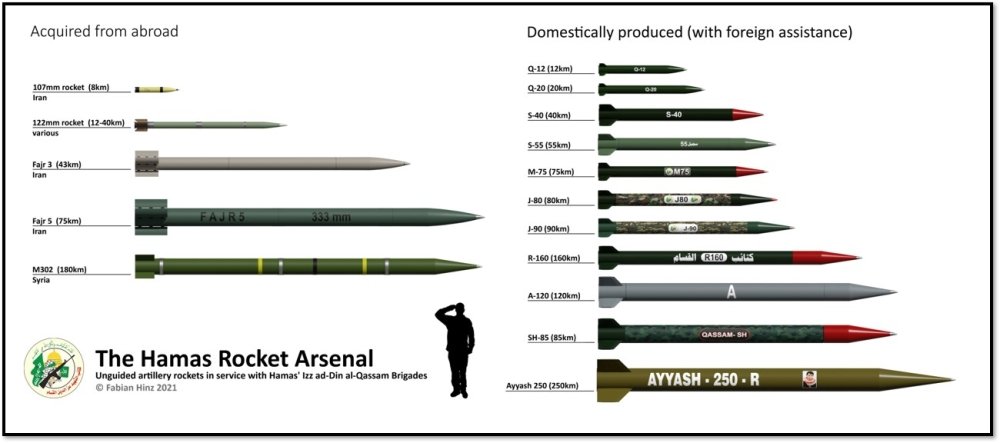
Palestinian Islamic Jihad
Overview and Ideology

PIJ, or Harakat al Jihad al Islam fi Filistin, is an Islamist militant group originally established in 1979 in Egypt as an offshoot of the Muslim Brotherhood. The group was founded by two Palestinian members of the Brotherhood, Fathi Shikaki and Abd al Aziz Awda (also spelled Odah), who were studying in Egypt at the time. Early members believed that the Brotherhood was too moderate and was not adequately committed to the Palestinian cause.
Egypt expelled the group after the assassination of President Anwar Sadat by Egyptian Islamic Jihad in 1981. PIJ moved to Gaza and began operating as a separate entity. As an underground movement, PIJ’s fighters engaged in sporadic attacks against Israeli security forces. Shikaki was arrested, imprisoned, and eventually exiled to Lebanon in the late 1980s. In 1989, PIJ leaders moved their headquarters from Lebanon to Damascus but left behind a small contingent in Beirut.
Since the early 1990s, PIJ’s military wing, the al Quds brigades, has been responsible for dozens of suicide bombings against Israeli targets. One of its the most infamous was in 1995, when members targeted Israel Defense Forces soldiers and, in a second attack, the emergency services’ personnel who responded, killing 22 Israelis. The same year, Shikaki was assassinated in Malta, reportedly by Mossad. He was replaced by one of his deputies, Ramadan Shallah. In October 1997, the United States designated PIJ as a Foreign Terrorist Organization.
From its inception, PIJ drew inspiration from the Iranian revolution, despite being a Sunni movement. PIJ’s goals, as described in the “Manifesto of the Islamic Jihad in Palestine,” include rejection of “any peaceful solution to the Palestinian cause” and a belief that “the Jihad solution and the martyrdom style” are “the only choice for liberation.” Today, PIJ is the second largest group in Gaza, after Hamas.
Relationship with Iran
PIJ’s relationship with Iran began in the late 1980s after the group moved to Lebanon and cultivated a partnership with Hezbollah and the IRGC, which provided training and arms. Since then, the group’s military capabilities have expanded dramatically. In September 2000, Tehran reportedly employed an incentive system that paid PIJ millions of dollars for successful attacks against Israel.
PIJ does not hide its relationship with Iran. In June 2002, Shallah met with Supreme Leader Ayatollah Ali Khamenei, who reportedly pledged to increase funds by 70 percent to cover expenses for suicide bombings. “The Palestinian Islamic Jihad is another fruit of the Ayatollah Khomeini’s fructuous tree,” Shallah said.
In 2012, PIJ reportedly relocated its headquarters from Damascus to Tehran due to the civil war in Syria. During the brief conflict between Israel and Gaza-based militants in 2012, Iran reportedly supplied PIJ with Fajr-5 rockets, which have a range of up to fifty-miles. “We would like to thank our brothers in Iran for the great sacrifices they made to deliver this weapon to us for the sake of defending the Palestinian people, Ziad al Nakhala, PIJ deputy chairman told the Paltoday website.
The weapons were delivered to the Gaza Strip via Egypt, he added, noting that Iran pledged shipments would continue in the future. “The weapons used by the resistance [PIJ] – the whole world knows that they come mostly from Iran or were purchased with Iranian funding,” Shallah said.

In contrast to Hamas, PIJ does not typically offer social services, although it provided food and other provisions in 2013 when Iran cut off funding to Hamas and pressed PIJ to compensate. PIJ distributed boxes of food with the PIJ logo and the Iranian flag.
Iran reportedly cut off funding to PIJ in May 2015 because it refused to support Tehran’s involvement in Yemen. Iran shifted funds to As-Sabarin, or “the Patient,” a Gaza movement led by Hisham Salem, a former PIJ member.
In May 2016, the Islamic Republic resumed support for PIJ, reportedly allocating $70 million annually. The decision followed a visit by a PIJ delegation to Tehran. Lieutenant-General Gadi Eizenkot, chief of staff of Israel’s armed forces, said Iran increased funding to groups in the Gaza Strip starting in late 2017. “In recent months, investment in the Palestinian arena has also been growing out of a desire to influence it - with an increase in the (annual) funding in the Gaza Strip for Hamas and Islamic Jihad to $100 million,” he said in January 2018. Israeli media later reported that Iran was transferring some $30 million a year, or $2.5 million a month, to PIJ. In May 2018, PIJ launched rockets into Israel.
In May 2021, PIJ and Hamas launched thousands of rockets into Israel in response to what they considered to be Israeli provocations in Jerusalem. “I am proud to say that the rockets that are used to pound Tel Aviv have an Iranian signature on them, the signature of Qassem Soleimani,” PIJ official Ramez al Halabi told an Iraqi television station on May 7. He thanked Iran for providing “weapons, money and food” to the Palestinian people.
Iranian leaders praised PIJ for participating in the Hamas-led attack on Israel in October 2023 that left more than 1,000 people dead. “What happened in the occupied territories and in the battle with the usurping Zionist regime was a huge, unique event in the past 70 years, and you really made the Islamic community happy with this innovative and victorious operation,” President Raisi said in a call with al Nakhala on Oct. 8, 2023.
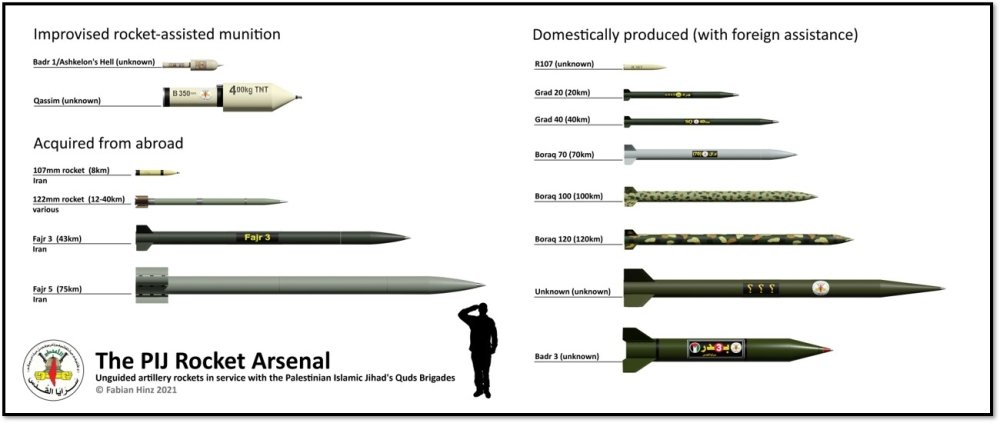
Relations Between Hamas and PIJ
Both groups emerged from the Muslim Brotherhood in Egypt. They share the goal of destroying Israel and replacing it with a Palestinian state ruled by an Islamic government. Unlike Hamas, however, PIJ refuses to negotiate or engage in diplomacy. PIJ prioritizes militant activity, while Hamas is a political party, provides social services and has a military wing.
PIJ and Hamas have both competed and cooperated. The movements vied in the late 1980s and early 1990s, mainly over ideological differences. PIJ identifies with the Iranian concept of waliyat al faqih, which entrusts governance to clerics led by a supreme jurisprudent. Hamas rejects this notion. After the 1993 Oslo Accords, the two movements set apart many of their differences and joined the Damascus-based Alliance of Palestinian Forces.
In 1994-95, tensions broke out when PIJ experimented with offering social welfare services in competition with Hamas. Disputes between the movements were mild, however, and cooperation continued on militant activity.
Between 1993 and 2000, suicide attacks by Hamas and PIJ killed 181 Israelis and wounded 1,231, according to the Chicago Project on Security and Terrorism. Many of these attacks were allegedly orchestrated to disrupt the Oslo Accords.
During the second intifada, between 2000 and 2005, PIJ and Hamas continued to coordinate attacks. They carried out 96 suicide bombings that claimed the lives of more than 500 Israelis and wounded more than 3,000.
Suicide bombing attacks diminished significantly after the Israelis started construction of the security barrier in 2002. The wall separated sections of the West Bank from Israel. “There is the separation fence which is an obstacle to the resistance, and if it were not there, the situation would be entirely different,” Shallah, the PIJ leader, said on Hezbollah’s Al Manar TV in 2006. Hamas and PIJ then began relying on rocket and mortar attacks.
Between 2005 and 2015, Hamas, PIJ, and other Gaza-based militants have fired more than 12,000 rockets into Israel, killing at least 10 Israelis, injuring more than 1,100, and causing more than $50 million in property damage.
PIJ and Hamas have engaged in isolated violence against each other. In June 2013, Hamas police killed PIJ rocket unit commander Raed Jundiya after he launched rockets towards Israel that violated a ceasefire between Hamas and the Jewish state. PIJ cut off ties with Hamas for three days, but soon resumed cooperation.
In September 2017, Hamas and PIJ formed a joint command to coordinate activities in Gaza. “We emphasize the depth of the political relationship between Hamas and Jihad, hoping that the negotiations and meetings between us can continue on all levels,” said Mahmoud al-Zahar, a senior Hamas official. “Hamas has taken serious steps. These are not just theoretical writings.” In May 2018, PIJ and Hamas issued a joint statement vowing to work together against Israel.
This piece was originally published on July 9, 2018. It was updated in 2021 and 2023 to reflect new developments.
Photo credits: Haniyeh and Khamenei via Leader.ir; Shallah and Khamenei via Leader.ir

The Islamists
Learn more about Hamas and how it relates to similarly aligned organizations throughout the region. Read more

Explore More
Browse Insights & Analysis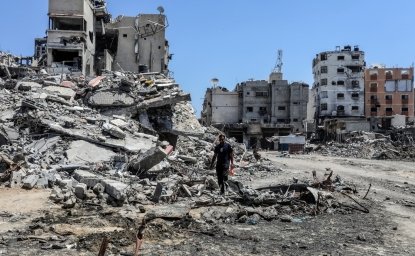
Israel Escalates Attacks in Gaza: What’s Next?
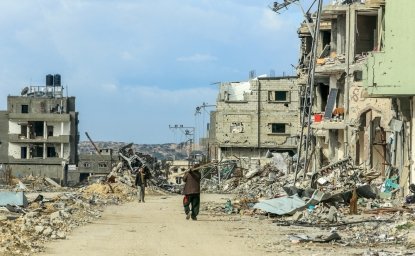
The Gaza Ceasefire and Its Aftermath: Danger and Opportunity
